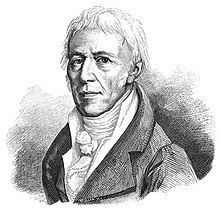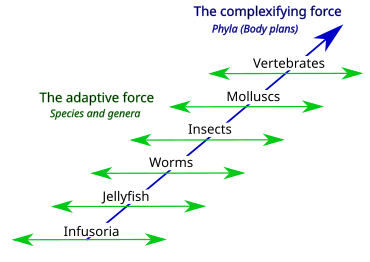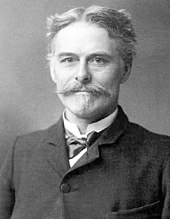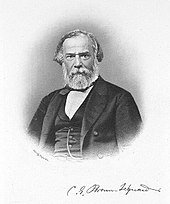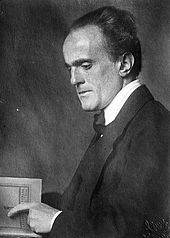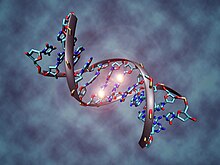Overview
Modernization theory both attempts to identify the social variables that contribute to social progress and development of societies and seeks to explain the process of social evolution. Modernization theory is subject to criticism originating among socialist and free-market ideologies, world-systems theorists, globalization theorists and dependency
theorists among others. Modernization theory stresses not only the
process of change but also the responses to that change. It also looks
at internal dynamics while referring to social and cultural structures
and the adaptation of new technologies.
Modernization theory maintains that traditional societies will develop
as they adopt more modern practices. Proponents of modernization theory
claim that modern states are wealthier and more powerful and that their
citizens are freer to enjoy a higher standard of living. Developments
such as new data technology and the need to update traditional methods
in transport, communication and production, it is argued, make
modernization necessary or at least preferable to the status quo. That
view makes critique difficult since it implies that such developments
control the limits of human interaction, not vice versa. And yet,
seemingly paradoxically, it also implies that human agency controls the
speed and severity of modernization. Supposedly, instead of being
dominated by tradition, societies undergoing the process of
modernization typically arrive at forms of governance dictated by
abstract principles. Traditional religious beliefs and cultural traits,
according to the theory, usually become less important as modernization
takes hold.
Historians link modernization to the processes of urbanization and industrialization
and the spread of education. As Kendall (2007) notes, "Urbanization
accompanied modernization and the rapid process of industrialization." In sociological critical theory, modernization is linked to an overarching process of rationalisation.
When modernization increases within a society, the individual becomes
increasingly important, eventually replacing the family or community as
the fundamental unit of society.
Origins
Sociological theories of the late 19th century such as Social Darwinism provided a basis for asking what were the laws of evolution of human society. The current modernization theory originated with the ideas of German sociologist Max Weber
(1864–1920) regarding the role of rationality and irrationality in the
transition from traditional to modern society. Weber's approach provided
the basis for the modernization paradigm as popularized by Harvard
sociologist Talcott Parsons (1902–1979), who translated Weber's works into English in the 1930s and provided his own interpretation.
After 1945 the Parsonian version became widely used in sociology
and other social sciences. By the late 1960s opposition developed
because the theory was too general and did not fit all societies in
quite the same way.
Globalization and modernization
Globalization
can be defined as the integration of economic, political and social
cultures. It is argued that globalization is related to the spreading of
modernization across borders.
Global trade has grown continuously since the European discovery of new continents in the Early modern period; it increased particularly as a result of the Industrial Revolution and the mid-20th century adoption of the shipping container.
Annual trans-border tourist arrivals rose to 456 million by 1990
and almost tripled since, reaching a total of over 1.2 billion in 2016.
Communication is another major area that has grown due to
modernization. Communication industries have enabled capitalism to
spread throughout the world. Telephony, television broadcasts, news
services and online service providers have played a crucial part in
globalization. Former U.S president Lyndon B. Johnson
was a supporter of the modernization theory and believed that
television had potential to provide educational tools in development.
With the many apparent positive attributes to globalization there
are also negative consequences. The dominant, neoliberal model of
globalization often increases disparities between a society's rich and
its poor.
In major cities of developing countries there exist pockets where
technologies of the modernised world, computers, cell phones and
satellite television, exist alongside stark poverty. Globalists are
globalization modernization theorists and argue that globalization is
positive for everyone, as its benefits must eventually extend to all
members of society, including vulnerable groups such as women and
children.
Democratization and modernization
The
relationship between modernization and democracy is one of the most
researched studies in comparative politics. There is academic debate
over the drivers of democracy because there are theories that support
economic growth as both a cause and effect of the institution of
democracy. “Lipset’s observation that democracy is related to economic
development, first advanced in 1959, has generated the largest body of
research on any topic in comparative politics,” (Przeworski and Limongi,
1997).
Larry Diamond and Juan Linz, who worked with Lipset in the book, Democracy in Developing Countries: Latin America,
argue that economic performance affects the development of democracy in
at least three ways. First, they argue that economic growth is more
important for democracy than given levels of socioeconomic development.
Second, socioeconomic development generates social changes that can
potentially facilitate democratization. Third, socioeconomic development
promotes other changes, like organization of the middle class, which is
conducive to democracy.
As Seymour Martin Lipset put it, "All the various aspects of
economic development — industrialization, urbanization, wealth and
education — are so closely interrelated as to form one major factor
which has the political correlate of democracy". The argument also appears in Walt W. Rostow, Politics and the Stages of Growth (1971); A. F. K. Organski, The Stages of Political Development (1965); and David Apter, The Politics of Modernization
(1965). In the 1960s, some critics argued that the link between
modernization and democracy was based too much on the example of
European history and neglected the Third World. Recent demonstrations of the emergence of democracy in South Korea, Taiwan and South Africa have been cited as support for Lipset's thesis.
One historical problem with that argument has always been Germany
whose economic modernization in the 19th century came long before the
democratization after 1918. Berman, however, concludes that a process of
democratization was underway in Imperial Germany, for "during these
years Germans developed many of the habits and mores that are now
thought by political scientists to augur healthy political development".
Ronald Inglehart and Christian Welzel
(2009) contend that the realization of democracy is not based solely on
an expressed desire for that form of government, but democracies are
born as a result of the admixture of certain social and cultural
factors. They argue the ideal social and cultural conditions for the
foundation of a democracy are born of significant modernization and
economic development that result in mass political participation.
Peerenboom (2008) explores the relationships among democracy, the
rule of law and their relationship to wealth by pointing to examples of
Asian countries, such as Taiwan and South Korea, which have
successfully democratized only after economic growth reached relatively
high levels and to examples of countries such as the Philippines, Bangladesh, Cambodia, Thailand, Indonesia and India, which sought to democratize at lower levels of wealth but have not done as well.
Adam Przeworski
and others have challenged Lipset's argument. They say political
regimes do not transition to democracy as per capita incomes rise.
Rather, democratic transitions occur randomly, but once there, countries
with higher levels of gross domestic product per capita remain
democratic. Epstein et al. (2006) retest the modernization hypothesis
using new data, new techniques, and a three-way, rather than
dichotomous, classification of regimes. Contrary to Przeworski, this
study finds that the modernization hypothesis stands up well. Partial
democracies emerge as among the most important and least understood
regime types.
Highly contentious is the idea that modernization implies more
human rights, with China in the 21st century being a major test case.
Technology
New technology
is a major source of social change. (Social change refers to any
significant alteration over time in behavior patterns and cultural
values and norms.) Since modernization entails the social transformation
from agrarian societies to industrial ones, it is important to look at
the technological viewpoint; however, new technologies do not change
societies by itself. Rather, it is the response to technology
that causes change. Frequently, technology is recognized but not put to
use for a very long time such as the ability to extract metal from rock.
Although that initially went unused, it later had profound implications
for the developmental course of societies. Technology makes it possible
for a more innovated society and broad social change. That dramatic
change through the centuries that has evolved socially, industrially,
and economically, can be summed up by the term modernization. Cell
phones, for example, have changed the lives of millions throughout the
world. That is especially true in Africa and other parts of the Middle East,
where there is a low cost communication infrastructure. With cell phone
technology, widely dispersed populations are connected, which
facilitates business-to-business communication and provides internet
access to remoter areas, with a consequential rise in literacy.
Development and modernization
Development,
like modernization, has become the orienting principle of modern times.
Countries that are seen as modern are also seen as developed, which
means that they are generally more respected by institutions such as the
United Nations
and even as possible trade partners for other countries. The extent to
which a country has modernized or developed dictates its power and
importance on the international level.
Modernization of the health sector of developing nations recognizes that transitioning from 'traditional'
to 'modern' is not merely the advancement in technology and the
introduction of Western practices; implementing modern healthcare
requires the reorganization of political agenda and, in turn, an
increase in funding by feeders and resources towards public health.
However, rather than replicating the stages of developed nations, whose
roots of modernization are found with the context of industrialization or colonialism,
underdeveloped nations should apply proximal interventions to target
rural communities and focus on prevention strategies rather than
curative solutions. That has been successfully exhibited by the
Christian Medical Commission and in China through 'barefoot doctors'. Additionally, a strong advocate of the DE-emphasis of medical institutions was Halfdan T. Mahler, the WHO General Director from 1973 to 1988. Related ideas have been proposed at international conferences such as Alma-Ats and the "Health and Population in Development" conference, sponsored by the Rockefeller Foundation in Italy in 1979, and selective primary healthcare and GOBI
were discussed (although they have both been strongly criticized by
supporters of comprehensive healthcare). Overall, however, this is not
to say that the nations of the Global South can function independently
from Western states; significant funding is received from well-intention
programs, foundations, and charities that target epidemics such as HIV/AIDS, malaria, and tuberculosis that have substantially improved the lives of millions of people and impeded future development.
Modernization theorists often saw traditions as obstacles to
economic growth. According to Seymour Martin Lipset, economic conditions
are heavily determined by the cultural, social values present in that
given society. Furthermore, while modernization might deliver violent, radical change for traditional societies,
it was thought worth the price. Critics insist that traditional
societies were often destroyed without ever gaining the promised
advantages if, among other things, the economic gap between advanced
societies and such societies actually increased. The net effect of
modernization for some societies was therefore the replacement of
traditional poverty by a more modern form of misery, according to these critics.
Others point to improvements in living standards, physical
infrastructure, education and economic opportunity to refute such
criticisms.
Applications
United States foreign aid in the 1960s
President John F. Kennedy (1961-1963) relied on economists W.W. Rostow on his staff and outsider John Kenneth Galbraith for ideas on how to promote rapid economic development in the "Third World",
as it was called at the time. They promoted modernization models in
order to reorient American aid to Asia, Africa and Latin America. In the
Rostow version in his The Stages of Economic Growth (1960)
progress must pass through five stages, and for underdeveloped world the
critical stages were the second one, the transition, the third stage,
the takeoff into self-sustaining growth. Rostow argued that American
intervention could propel a country from the second to the third stage
he expected that once it reached maturity, it would have a large
energized middle class that would establish democracy and civil
liberties and institutionalize human rights. The result was a
comprehensive theory that could be used to challenge Marxist ideologies,
and thereby repel communist advances. The model provided the foundation for the Alliance for Progress in Latin America, the Peace Corps, Food for Peace, and the Agency for International Development
(AID). Kennedy proclaimed the 1960s the "Development Decade" and
substantially increased the budget for foreign assistance. Modernization
theory supplied the design, rationale, and justification for these
programs. The goals proved much too ambitious, and the economists in a
few years abandoned the European-based modernization model as
inappropriate to the cultures they were trying to impact.
Criticism
From the 1971s, modernization theory has been criticized by numerous scholars, including Andre Gunder Frank (1929 – 2005) and Immanuel Wallerstein (born 1930).
In this model, the modernization of a society required the destruction
of the indigenous culture and its replacement by a more Westernized one.
By one definition, modern simply refers to the present, and any
society still in existence is therefore modern. Proponents of
modernization typically view only Western society as being truly modern
and argue that others are primitive or unevolved by comparison. That
view sees unmodernized societies as inferior even if they have the same
standard of living as western societies. Opponents argue that modernity
is independent of culture and can be adapted to any society. Japan is
cited as an example by both sides. Some see it as proof that a
thoroughly modern way of life can exist in a non western society. Others
argue that Japan has become distinctly more western as a result of its modernization.
As Tipps has argued, by conflating modernization with other
processes, with which theorists use interchangeably (democratization,
liberalization, development), the term becomes imprecise and therefore
difficult to disprove.
The theory has also been criticised empirically, as modernization
theorists ignore external sources of change in societies. The binary
between traditional and modern is unhelpful, as the two are linked and
often interdependent, and 'modernization' does not come as a whole.
Modernization theory has also been accused of being Eurocentric, as modernization began in Europe, with the Industrial Revolution, the French Revolution and the Revolutions of 1848
(Macionis 953) and has long been regarded as reaching its most advanced
stage in Europe. Anthropologists typically make their criticism one
step further and say that the view is ethnocentric and is specific to Western culture.
Dependency theory
One alternative model on the left is Dependency theory.
It emerged in the 1950s and argues that the underdevelopment of poor
nations in the Third World derived from systematic imperial and
neo-colonial exploitation of raw materials. Its proponents argue that resources typically flow from a "periphery" of poor and underdeveloped states to a "core" of wealthy states, enriching the latter at the expense of the former. It is a central contention of dependency theorists such as Andre Gunder Frank that poor states are impoverished and rich ones enriched by the way poor states are integrated into the "world system".
Dependency models arose from a growing association of southern
hemisphere nationalists (from Latin America and Africa) and Marxists.
It was their reaction against modernization theory, which held that all
societies progress through similar stages of development, that today's
underdeveloped areas are thus in a similar situation to that of today's
developed areas at some time in the past, and that, therefore, the task
of helping the underdeveloped areas out of poverty is to accelerate them
along this supposed common path of development, by various means such
as investment, technology transfers, and closer integration into the
world market. Dependency theory rejected this view, arguing that
underdeveloped countries are not merely primitive versions of developed
countries, but have unique features and structures of their own; and,
importantly, are in the situation of being the weaker members in a world
market economy.
